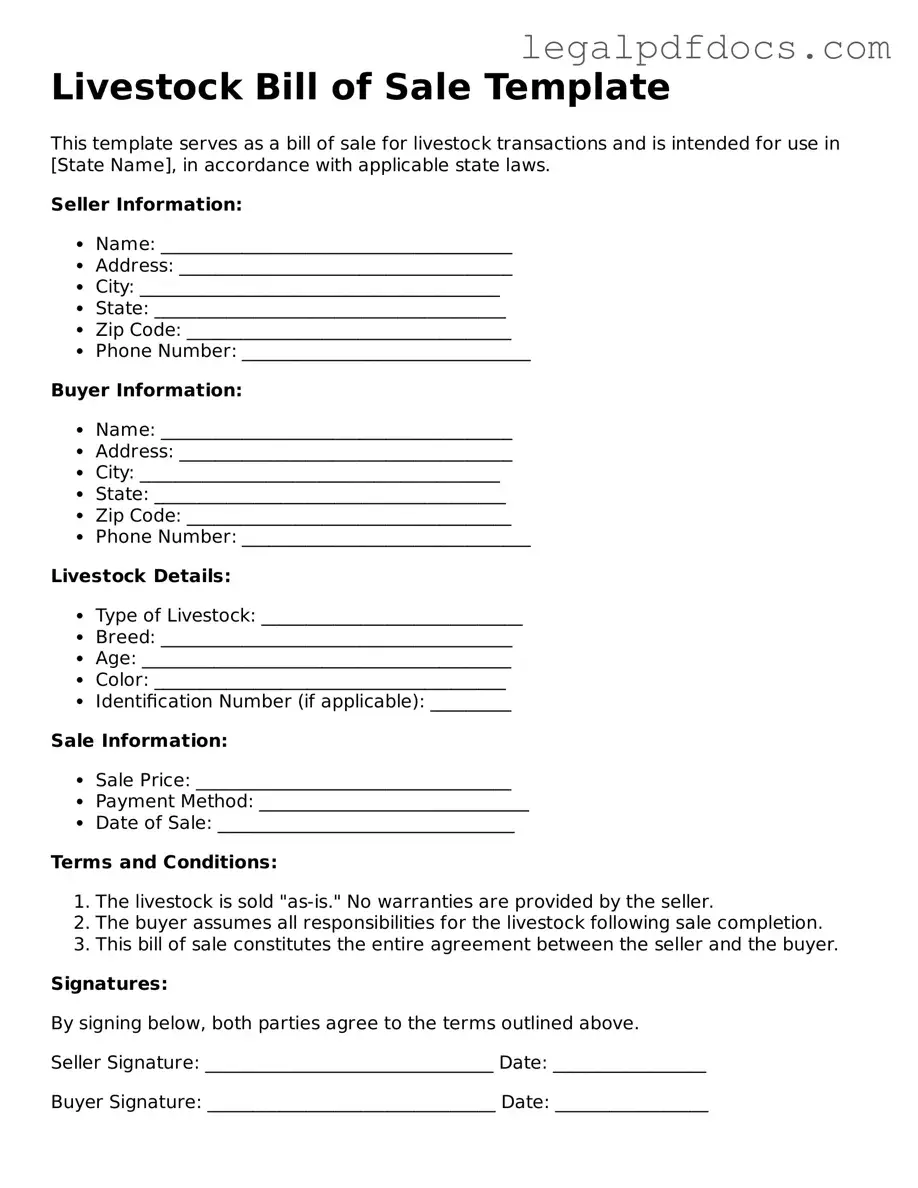Livestock Bill of Sale Template
The Livestock Bill of Sale form serves as a legal document that records the transfer of ownership of livestock from one party to another. This form is essential for ensuring that both the buyer and seller have a clear understanding of the transaction details, including the type of livestock, sale price, and any warranties or conditions. For those looking to complete a livestock sale, filling out this form accurately is crucial; click the button below to get started.
Open Livestock Bill of Sale Editor Here
